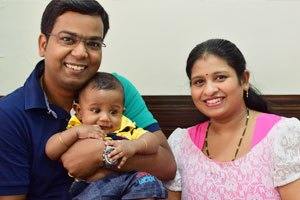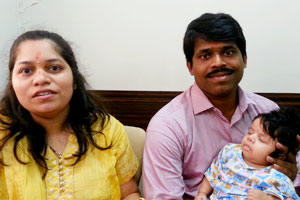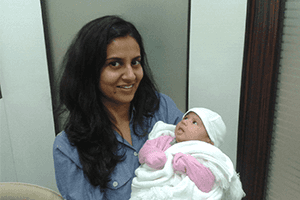Treatment of Uterine Fibroids at Welling Speciality clinics involves our specially formulated Homeopathy treatment that is tailor-made for you by our specialists. Call or meet our specialists for a detailed evaluation and cure. The earlier you start, the faster is the reversal in your fibroids.
Fibroids are growths of tissue that are usually found in the wall of the uterus, or womb. They are made of a mixture of muscle tissue from the uterus and threadlike fibers of connective tissue.
Although they are called tumors, fibroids are not cancerous. About 1 in every 15 women with infertility has fibroids, but the fibroids are usually innocent bystanders: They cause only 2% to 3% of cases of infertility. Fibroids that block one or both of the fallopian tubes may prevent sperm from fertilizing an egg. Fibroids that fill the uterine cavity may block implantation of a newly fertilized egg.
Fibroids are very common. They occur in 2 or 3 out of every 10 women over age 35. They occur most often in women between ages 30 and 50, although women in their 20s sometimes have them.
It is common to have more than one fibroid. Some women may have as many as a hundred. Fibroids can be as small as a pinpoint or as large as a basketball. They are usually round or oval in shape, like a ball or an egg. Their texture is firm, like an unripe peach.
What causes uterine fibroids and how common are they?
We do not know exactly why women develop these tumors. Genetic abnormalities, alterations in growth factor (proteins formed in the body that direct the rate and extent of cell proliferation) expression, abnormalities in the vascular (blood vessel) system, and tissue response to injury have all been suggested to play a role in the development of fibroids.
Uterine Fibroid Causes
The exact reasons why some women develop fibroids are unknown. Fibroids tend to run in families, and affected women often have a family history of fibroids.
Fibroids grow in response to stimulation by the hormone estrogen, produced naturally in the body. These growths can show up as early as age 20 and shrink after menopause when the body stops producing large amounts of estrogen.
Fibroids can be tiny and cause no problems, but they also can grow to weigh several pounds. Fibroids grow slowly.
The following factors have been associated with the presence of fibroids:
- Being overweight, obesity
- Never having given birth to a child (called nulliparity)
- Onset of the menstrual period prior to age 10
Symptoms of Fibroids:
Most women with uterine fibroids have no symptoms.
However, abnormal uterine bleeding is the most common symptom of a fibroid. If the tumors are near the uterine lining, or interfere with the blood flow to the lining, they can cause heavy periods, painful periods, prolonged periods or spotting between menses. Women with excessive bleeding due to fibroids may develop iron deficiency anemia. Uterine fibroids that are deteriorating can sometimes cause severe, localized pain.
In women who have symptoms, the most common symptoms of uterine fibroids include:
- Heavy menstrual bleeding
- Prolonged menstrual periods — seven days or more of menstrual bleeding
- Pelvic pressure or pain
- Frequent urination
- Difficulty emptying your bladder
- Constipation
- Backache or leg pains
Rarely, a fibroid can cause acute pain when it outgrows its blood supply. Deprived of nutrients, the fibroid begins to die. Byproducts from a degenerating fibroid can seep into surrounding tissue, causing pain and fever. A fibroid that hangs by a stalk inside or outside the uterus (pedunculated fibroid) can trigger pain by twisting on its stalk and cutting off its blood supply.
See your doctor if you have:
- Pelvic pain that doesn’t go away
- Overly heavy or painful periods
- Spotting or bleeding between periods
- Pain with intercourse
- Difficulty emptying your bladder
- Difficulty moving your bowels
Seek prompt medical care if you have severe vaginal bleeding or sharp pelvic pain that comes on suddenly.
Facts about fibroids
- Fibroids are very common. They occur in 2 or 3 out of every 10 women over age 35.
- It is common to have more than one fibroid. Some women may have as many as a hundred.
- Fibroids occur most often in women between ages 30 and 50, although women in their 20s sometimes have them.
Treatment of Uterine Fibroids:
Homeopathy has been known to offer complete cure for fibroids and also reverse any effects of the fibroids. Welling Clinic infertility treatment protocol encompass treatment for Uterine fibroids too. The 4 step infertility treatment from Welling Clinic has been very effective in gentle and painless relief from fibroids.
Visit our clinic or consult our doctors online for a detailed assessment.








I have a sub serosal fibroid